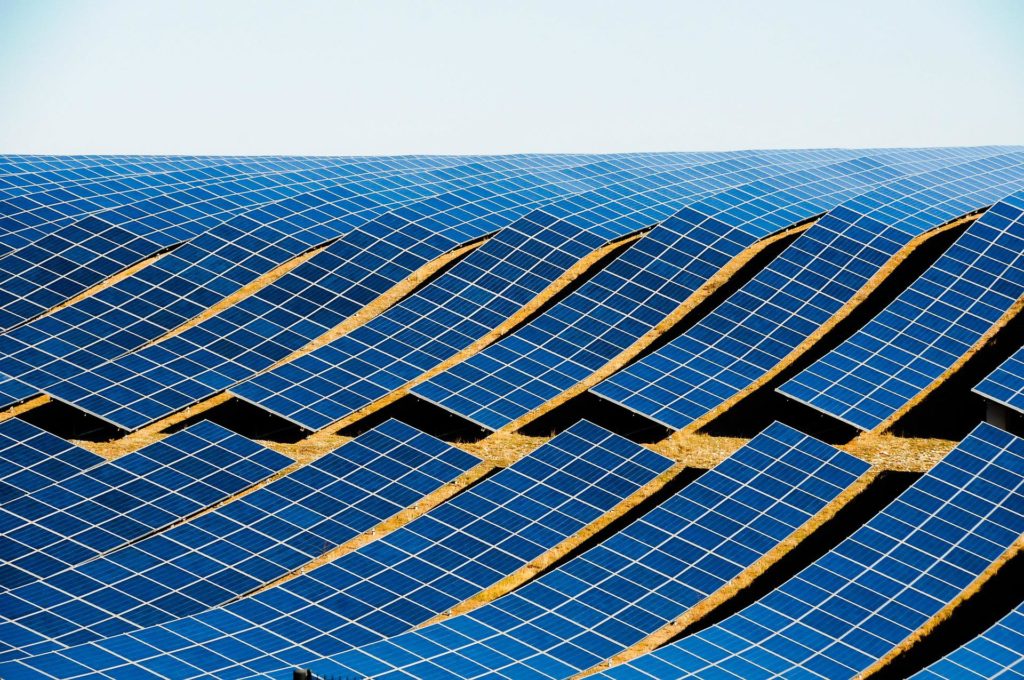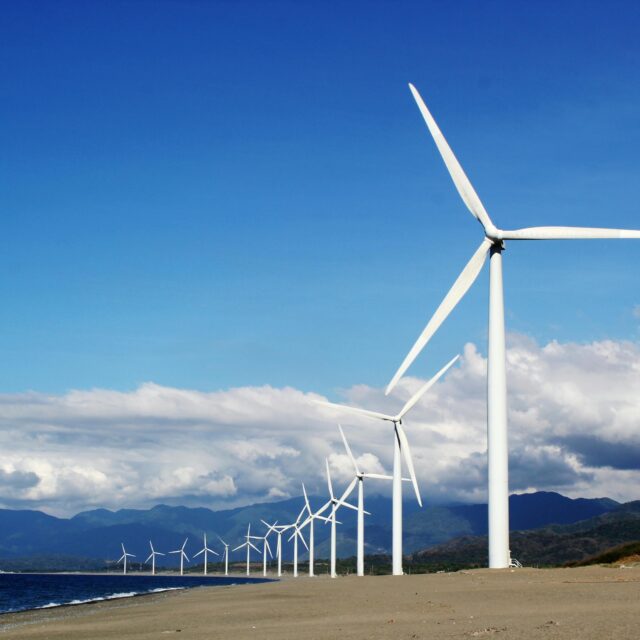
Community solar presents an opportunity for you to reduce your electric bills while supporting renewable energy and a cleaner future for our planet. There’s a lot of electricity from sunshine to go around, but how exactly do the solar panels on a community solar farm convert the sun’s light into electrical energy that you can use to power your home? To better understand all of these elements, we’ve laid this information out step-by-step, and have some great visual diagrams for you to look at!
How Do Solar Panels Work?
The sun is always shining—even on cloudy days—and depending on how much solar radiation makes it through the clouds to the surface of a solar panel, electricity can be harnessed from the sun just about every day of the year.
So how exactly do photovoltaic (PV) solar cells work? Well, in a nutshell, sunlight reaches the surface of a solar panel in the form of protons, which are small energy particles with a positive electric charge. The glass on the solar panel allows as much light as possible, and that light comes into contact with the semiconductors (typically silicon) inside of the solar cells. When the protons from the sunlight come into contact with the silicon, this causes a chemical reaction to take place (called the photovoltaic effect), allowing photons to separate electrons from atoms. This creates a flow of direct current (DC) electricity.
In this article, you can dive even further into the science behind solar panels.
Solar Cells, Solar Modules, Solar Panels, and Solar Arrays
We hear these terms a lot, but let’s make sure we understand what each of them means. A solar cell is the smallest functional unit or the building block of a generator using the photovoltaic effect to convert solar energy into electrical energy. Solar cells contain all the parts that are necessary to convert sunlight into electricity. Multiple solar cells can be oriented in the same way to then create what we call solar modules. Solar modules are large groupings of solar cells. Multiple solar cells can be connected in a series or through parallel circuits to create solar modules that can produce higher currents and more energy. The solar cells and wiring are enclosed within a case that protects it from weather and the elements.
Multiple solar modules can then be arranged into a single unit known as a solar panel. The solar panel is pre-wired and ready for field installation. Combining several solar panels together creates a solar array.
Solar Farms
A solar farm is a large array of PV panels that absorb the sun’s energy, convert it into electricity, and send that electrical energy to a power grid for consumers to use. There are two main types of solar farms: utility-scale farms and community solar farms. Utility-scale farms can generate around 180 megawatts to power somewhere around 30,000 homes, while community solar farms are small-scale facilities typically generating around 10 megawatts or less of electricity for use by local homes and businesses. Clearway Community Solar’s farms are among the largest community solar farms in the nation, including Massachusetts, Illinois and New York, and collectively, our solar farms have produced over 1 billion kilowatt hours of solar energy—equivalent to taking over 154,124 cars off the road for one year!
On community solar farms, solar panels are installed in a large, open area of the neighborhood that receives maximum exposure to sunlight. At Clearway Community Solar, our dedicated teams evaluate the best locations in every state to build solar farms, utilizing industrial-grade solar panels.
Converting DC to AC Electricity For Use
After the PV cells within the panels convert the sun’s energy into DC electricity, an inverter takes the DC electricity that was produced by the solar cells and converts it into alternating current (AC) electricity that is ready for consumers to use. The electric current is sent through cables to properties via a three-phase distribution line. On larger-scale projects, electricity is routed through the power grid by connecting with a substation.
For those on the energy grid who are “subscribed” to community solar, you get a credit applied to your monthly energy bill through something called “virtual net energy metering.” The energy produced by the solar panels that you own on the solar farm is metered by the utility company, and credits automatically appear on your electricity bill. This lowers the cost of utilities significantly compared to energy consumption through the usual fossil fuel resources. Currently, 25 states across the United States offer virtual net metering.
You can learn more about how Clearway Community Solar works here.
DIAGRAMS TO DRAW UP:
- The Photovoltaic Effect: diagram of solar cell on this page https://battlebornbatteries.com/are-solar-panels-recyclable/
- Solar Cell → Solar Module → Solar Panel → Solar Array: https://energyresearch.ucf.edu/consumer/solar-technologies/solar-electricity-basics/cells-modules-panels-and-arrays/
- Community Solar Diagram: https://renovussolar.com/community-solar/









